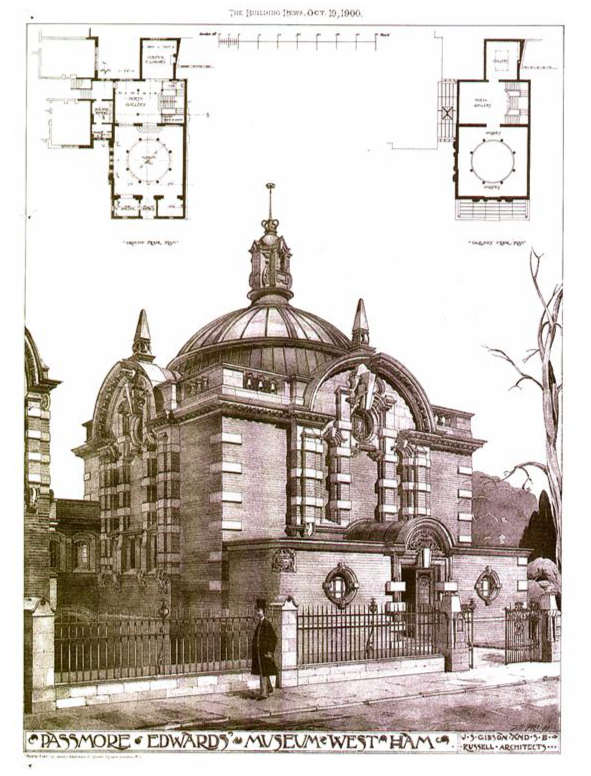
History
In 1897 the Essex Field Club, a naturalist society founded in 1880, was looking for a new home and the West Ham Corporation agreed to include a museum within the library and technical schools they were building. When Passmore Edwards agreed to give £3,000 a separate museum building was proposed and after opening the library and technical school, in October 1898, Edwards went on to lay the foundation stone for the Museum on the adjoining site. The architects responsible for the Library and Technical School were chosen to design the museum. W S Gibson and S B Russell designed a symmetrical building with few external windows but capped with a spectacular leaded glass cupola topped with an art nouveau finial. Inside the light flooding from the lantern above fully illuminated the open octagonal space with minstrel gallery and mosaic floor.
The Countess of Warwick opened the museum on 18 October 1900, at the same time unveiling a bronze bust of Edwards given by the sculptor Henry Fehr. Following the opening Passmore Edwards reopened the Technical school, rebuilt after being destroyed in a fire the previous year, and which he referred to as being ‘the people’s university’.
Once one of East London’s best known attractions the museum closed in 1995 and the collections dispersed. The Essex Field Club, however, remains a key player in nature conservation in Essex, promoting the publication of natural history guides and scientific surveys in the County.
The building then remained empty and run down, rainwater leaking through the roof causing damage to the intricate plasterwork. In 2003 the Duke of Gloucester, Patron of the Victorian Society, reopened the Grade 2 listed building, after it had been rescued and restored by the University of East London. The exhibitions of historic London had been replaced by a café bar, offices and an entertainment area, for the Stratford Campus Student Union. The technical school and former library are also now part of the UEL, with more than 3,000 students including many local residents, students at the ‘peoples university’.